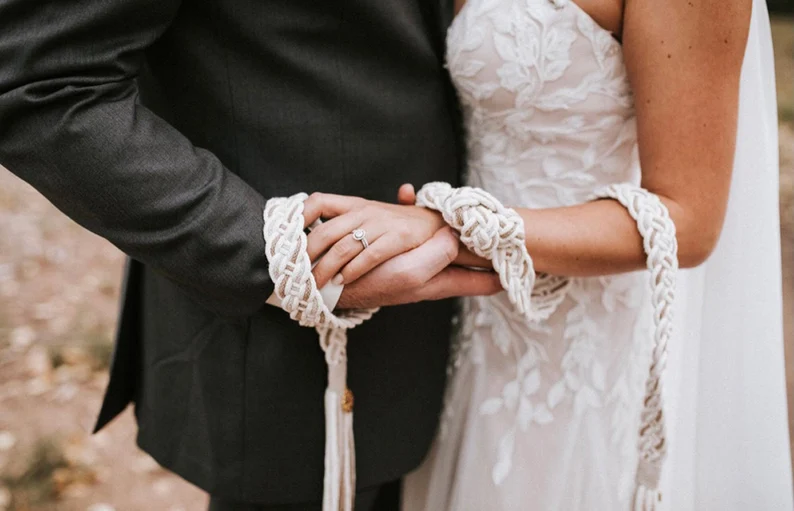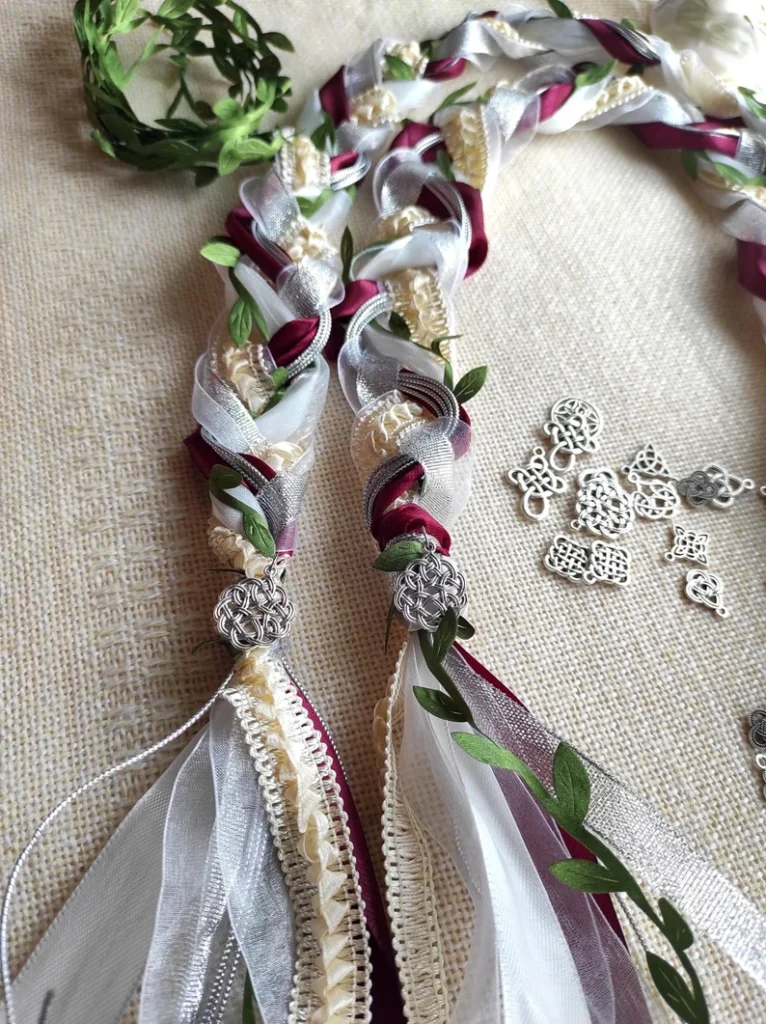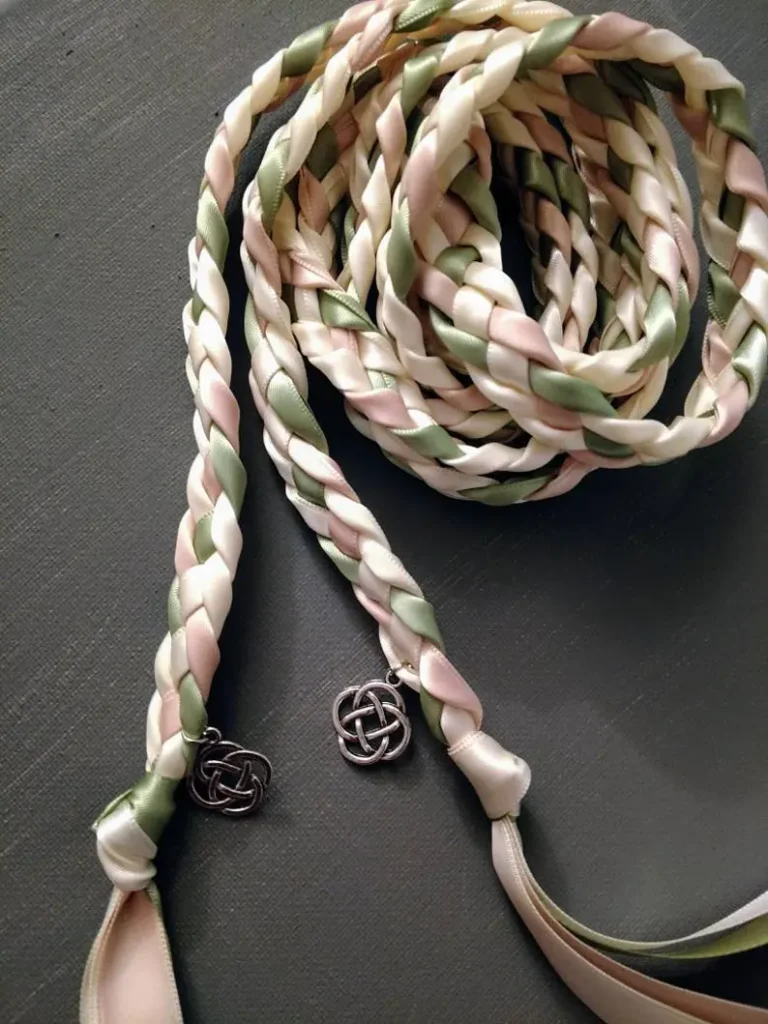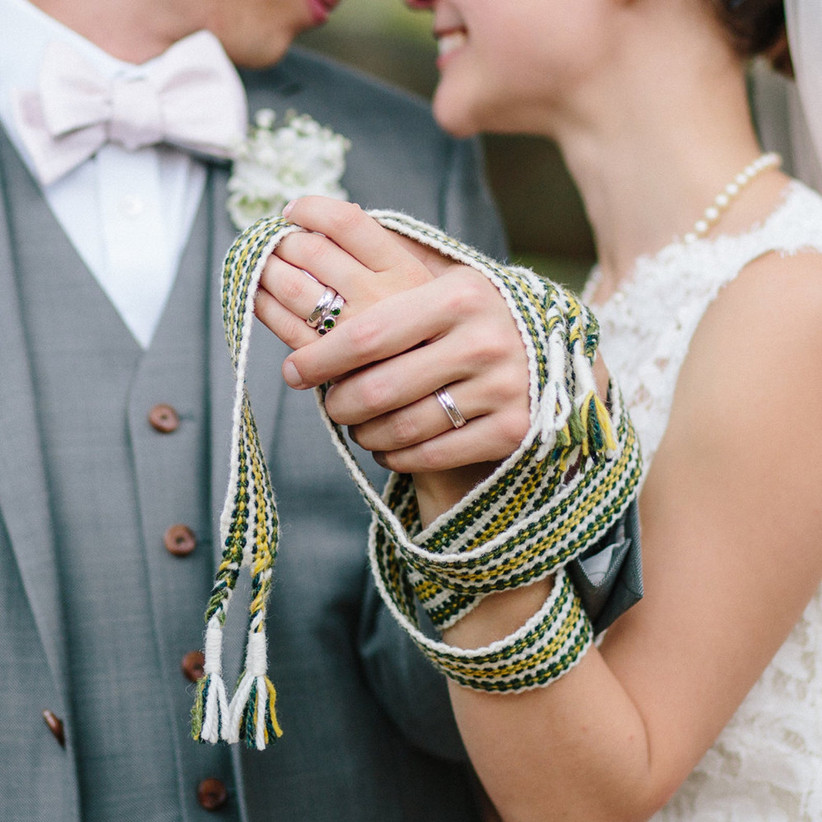For couples looking to incorporate a deep, symbolic ritual into their wedding cermony, a handfasting may be the perfect addition. Rooted in ancient traditions, this meaningful ritual is a beautiful way to celebrate the union of two people in love.
Handfasting is literally tieing the knot. The ceremony represents the joining of two lives, families and futures. It is a powerful symbol of love, commitment, and the strength of the bond between two people. Often the binding of hands is accompanied by vows, promises or blessings, making the ritual even more meaningful.
Handfasting history.
The roots of handfasting ceremonies are in several cultures, but they are most closely associated with Celtic and Norse traditions. In these early cultures, handfasting was often seen as a way to formally bind two people in marriage.
Some accounts suggest that handfasting was a trial marriage for one year and one day to decide if the couple should stay together or go their seperate ways. Overtime handfasting has evolved into a more symbolic act, representing an enduring commitment to marriage.

How to include handfasting into your ceremony.
Handfasting is a beautiful symbolic act that signifies the spiritual, emotional and physical bond between two people. The ritual itself is deeply personal, and many couples use it to express their love and commitment in a unique and meaningful way.
Choosing the right ribbons or cords.
Ribbons can be used, plaited using 3 or more, or the use of cords, again made into a solid plait. Alternatively, key guests can place individual cords and ribbons over the couples joined hands for these to be used to tie the knot.
Couples can choose the colour of the handfasting to tie in with their venue and theme or alternatively, choosing colours that have meanings such as love, abundance and happiness.

Timing of the handfasting
Handfasting can take place at any time during the service but more often than not is is during or after the exchange of vows. When done after their vows, it shows their physical commitment having verbally exchanged their promises.
Some couples tie the knot just before the exchange of rings, or alternatively leave it until the end of the ceremony leaving a lasting visual reminder of their commitment shared as a couple.
Cultural and spiritual traditions
Whilst the history of handfasting is most clearly associated with Celtic traditions, many couples choose to have handfasting in their weddings as part of a spiritual ceremony. It is also a wonderful choice for couples who want to incorporate nature based or pagan rituals into their ceremony.

If you want more inspiration of how else you could personalise your wedding ceremony, please have a look at my wedding page and scroll down or contact me for a no obligation chat.

